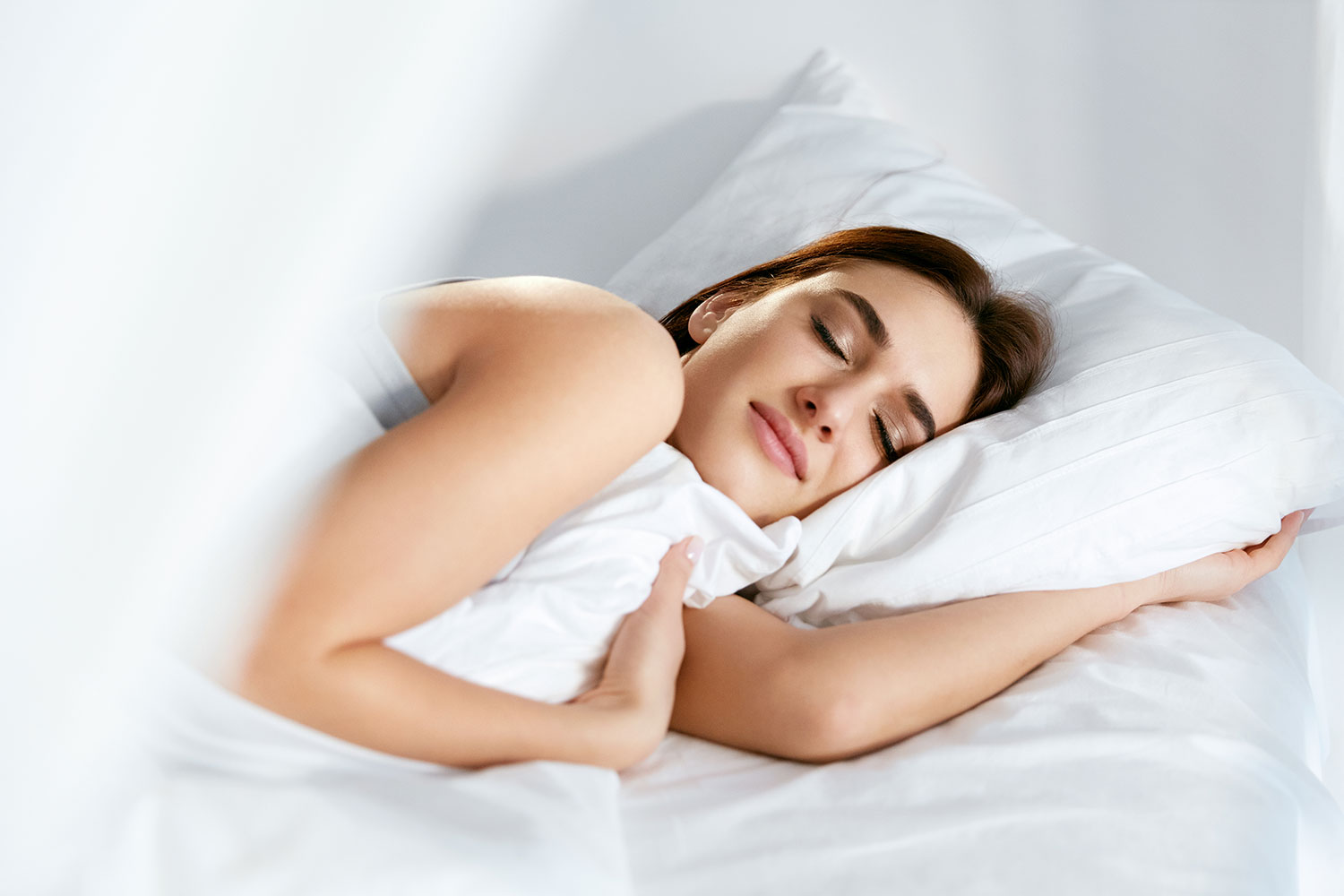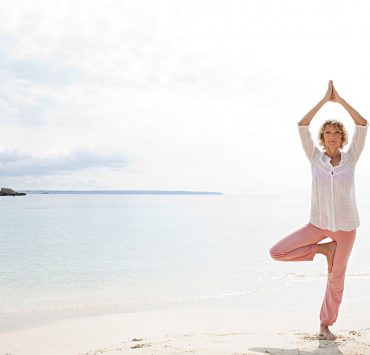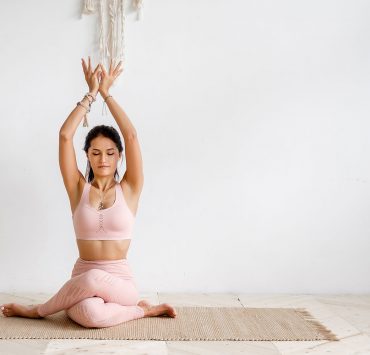
Having been a teacher’s assistant at over 50 yoga teacher…
Have you ever had one of those nights when you get into bed, turn off the lights, nice and cozy, and find yourself laying there aimlessly, unable to fall asleep? Or do you often struggle with falling asleep? Yoga helps. As it helps with balance, flexibility, strength, stress, and our overall state of being, it also benefits our sleep. Even those that struggle with insomnia have found yoga to improve their ability to sleep.
Sleep is an important part of living well and healthfully. As it is a vital role in supporting mental health, physical health, quality of life, growth, development, safety, and stability, the quality of our sleep is strongly related to how we feel throughout the day. So, if we are deficient in the amount of sleep we get over time (or pulling the occasional all-nighter) it can heighten the risk of chronic health problems as well as lack of brain development, memory loss, and overall health and well-being to be hindered. We all know if we don’t get a good night’s rest, we feel worse the next day. Or if we have gotten used to not sleeping well, then imagine how spectacular it would feel to sleep well. When we sleep well, we feel much more alive, right? Our bodies function smoothly, are attention and working minds function better, and we can see it in our faces alone. Nobody likes to hear “You look tired..”, which goes to show that the brighter eyes, tighter skin, and fresh morning look does attain to a good night’s rest.
So, what is a good night’s rest? It varies depending on age, the older we get then the less sleep we need. But never below 7 hours for adults. In fact, 7 hours of sleep would still be considered on the low side. Infants need 12-16 hours a day and by the time we get to be teenagers we need 8-10 hours a day. Now, it may seem like an hour lost here and there doesn’t sound like much. But, think of your lost hours of sleep for a week total as your sleep debt. If you get 6 hours of sleep 5 nights a week, and 8 hours of sleep for the other 2 nights, then your sleep debt toals to about 5 hours (if not more). Keep that amount for the month, then the amount of sleep debt is 20 hours, which is then 240 hours for the year. The what seemed like a small amount of sleep lost for one night adds up to be a lot of sleep lost. That is a lot of time that your body missed out on repairing itself and doing all of the wonderful things for your body and mind emotionally and physically that happens during sleep.
Lost sleep accumulates as a debt that must be repaid or health eventually deteriorates. William C. Dement, MD, PhD
Also, it should be noted that is not too easy to simply “catch up” on lost sleep. I wish it did work that way (thinking back to my own nights in college studying until the next morning and thinking I would catch up by sleeping all day the next day). Missing a giant chunk of sleep for one night wreaks havoc on your body clock and deprives your body of sleep when it needs it, we can’t postpone when we need to sleep. If you would like to follow your sleep patterns, you can find a simple sleep diary with the National Heart, Lung, and Blood Institute’s “Your Guide to Healthy Sleep.”

Whether you don’t sleep quite long enough, or a sleep disorder like insomnia dictates your sleeping schedule, yogic techniques can help. And they are worth trying. These poses and methods are ways of helping your body get to sleep naturally rather than taking a supplement that can be habit forming. Sure, a supplement can be really helpful, but if it is something that you would prefer not to rely on for the long term, then try yoga as an aid. A nationwide study found that over 55% of yoga practitioners reported that yoga does help them sleep better, and 85% report feeling less stressed.
Sleep is regulating and balancing factor in maintaining healthy weight, strengthening of our immune systems, protects cardiovascular health, repairs tissues and cells, and restores our energy. Sleep balances the body and the mind, bringing it all in harmony. When it comes to yoga, however, sleep is believed to do even more for our beings. Sleep helps us stay spiritually balanced. Yogic teachings classify sleep as one of our primitive instincts and urges (with food, self-preservation, and sex). Meaning that we must follow and act on these instincts to not just maintain survival but to reach our potential in spiritual growth. And if one of these becomes out of balance, then the other primitive instincts all fall out of balance. For example,
Try these four yoga poses before going to bed to help you better fall asleep and stay snoozin’ like a baby.
You can do these poses on your yoga mat, or you can even do them on your bed for extra cushion. Give yourself plenty of time in each pose, to really sink into the goodness each pose has to offer. I mean at least 5 minutes in each pose. It takes a minute or two for the body and mind to settle in. Think of this as a snow globe. We go all day long shaking up your snow globe in your body, and when it comes time to rest and come into these poses, you need to have the time for the snowflakes in the snow globe to settle. Allow yourself to just be.
Supta Matsyendrasana — Reclined Spinal Twist Pose

Supta Matsyendrasana is always a go-to. This pose is especially beneficial for insomnia as well as sciatica and more. Being that this is a twist that is done reclined on your back, it helps to relieve pressure on your spine. And it is one of the few ways that allows your spine to decompress, lubricate, and rejuvenate the motifiti muscles that are in between each and every vertebrae.
From laying on your back, hug one knee in towards your chest and slowly guide it across your body to come into the twist. Send your gaze to look over the opposite shoulder, for a full twist of your spine. Focus on following your breath up and down your spine as it moves through your body. You have the option of allowing your arms to rest where the are comfortable, whether out in a T-position or above your head. If you want extra coziness, take a pillow and place under the knee that is twisting so there is less strain, especially if you can’t quite find a good resting place for your knee. Hold this pose for a few minutes as you follow your breath, using your breath to instill a sense of calmness within you, and notice your spine decompressing before repeating on the other side.
Salamba Balanasana — Child’s Pose

Balasana is a pose that brings you into your being. Curling into your being to bring serenity, a sense of calmness, and the warm, fuzzy feeling of home. In child’s pose, hone in on your breath. Feel your breath expanding your back body on the inhales and grounding you into the earth and your being on the exhales. So, of course this is one of the best poses to prepare you for a good night’s rest.
Child’s pose is done with your knees on the mat, your hips shifted back to rest on your heels, and your torso melting onto your thighs or towards the mat. You can do this with your knees together or apart. If your knees are together, the pose will be more emphasized in your back. If your knees are wide, that will bring more emphasis in your hips. Give both placements a try to find what feels better for you in the moment. Also, experiment with your arms either by your side or extended in front of you. And again, do what feels good. For the purpose of helping you sleep, do what feels nice, juicy, and relaxing. It still may be uncomfortable, but give yourself at least a few minutes to stay in the pose for the magic to happen. You may find that after a minute or two, you will settle deeper into the pose. That is what you want.
Supta Baddha Konasana — Reclining Bound Angle Pose

Supta Baddha Konasana opens in your inner thigh area, hips, and front of the body. This pose is done by laying down on your back and bringing the soles of your feet together to allow your knees to fall out wide. To make this pose even more restorative and comfortable to spend time in, place a block or blanket under each knee for more support. This will also help to ease into the pose deeper as more time is spent there.
You also have some options with your arm and hand placement. Again, do what feels good. You can play with resting your arms above your head, down by your sides, or one hand on your heart and one hand on your belly. I personally like all of the variations, but I find that having one hand on my heart and on my belly to encourage me to focus on my breath and feel the rise and fall of the torso as the breath moves in and out.
Viparita Karani — Legs Up The Wall Pose

Viparita Karani is a restorative pose that is often done towards the end of a yoga class to prepare the body for the rest in savasana, as it can also prepare the body for sleep. This pose is a gentle inversion, so it also reverses blood flow, benefitting circulation of blood and lymphatic fluid gently.
To come into Legs Up The Wall, first place a mat or blanket by the wall to rest at least your hips, back, and head on. Then sit next to the wall with your side body to the wall. When you are ready, bring your legs up the wall and mindfully rest your body on the ground. Get comfortable and begin to incorporate deeper breathing. Focus on your exhales being a little bit longer than your inhales to engage your parasympathetic nervous system, also known as the “rest and digest” response in the body. You can stay in this pose for anywhere up to 20 or 30 minutes, if you like, but do try to stay at least for 5 minutes. You may notice some tingling happening in your toes, and this is okay, it means that the circulation reversal is working. When you have spent ample time, slowly and gently roll over towards your right side. Lay on your side for a minute or so, to gather your bearings and give your body time to adjust out of the pose.
Take a deep breath, exhale deeply and fully. Check in with your body and mind and determine if you are ready for sleep or if you want to do any other poses that are calling to you before crawling into bed.
A key thing to do while in these poses is to breathe slowly and deeply. Focus on breathing into areas that may be causing you some tension or discomfort. Use your breath to encourage your entire body to relax and prepare for sleep.
Once getting into bed, if you feel like you could use a few more minutes of grounding and relaxing into sleep, try a body scan. While laying down, cozy in bed, close your eyes and begin to focus in on your breath to deepen and breathe slowly. Bring your attention then to your feet, exhaling to relax, then moving up to your ankles… calves… knees…thighs… pelvis… and so on. Spend the time to exhale deeply at each body part and give all of your attention to the body part you are on. You may begin to drift off before you go through your entire body, and that is okay (it’s the point to help you get to sleep). If you get all the way up to the top of your head, then simply go back down with the scan of your body from the head down. This is a form of yoga nidra, which is a practice that is very beneficial for sleep for calming, peace, and relaxation of the body and mind. There are several guided yoga nidras out there, like this one, that you can try.
Give these ideas a try tonight, and see if you do sleep a little better. The more regularly that you do follow a bedtime yoga routine like this, then your body will begin to recognize better when it is time for sleep. …. Happy snoozing!
What's Your Reaction?
Having been a teacher’s assistant at over 50 yoga teacher trainings worldwide, Rebecca Rebecca has a firm grasp on the fine art of yoga and meditation. In her work, she carefully reflects on a vast expanse of knowledge to help others find peace in both body and mind.














